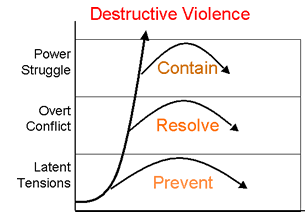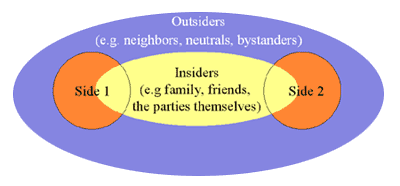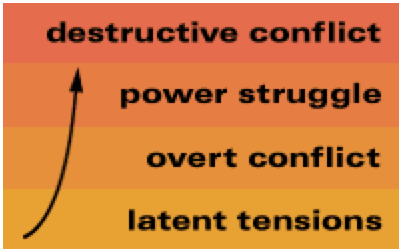Prevent, Resolve, Contain: A Story of Three Brothers
Lately, I have come to believe that we in the field have been thinking way too small. We’ve been thinking that it was enough to resolve disputes, particularly if it is done in whatever is our way of doing that. I am now coming to see mediation as part of a broad spectrum of collaborative processes. It is now easier to appreciate that just mediating and thinking of ourselves as mediators may be limiting of the opportunities and realizations of those with whom we work. And it may also be limiting of our career opportunities. Perhaps with a slight shift in orientation, we can think and speak more comprehensively about what we are doing. This will, in time, enrich what we are doing for the benefit of all concerned. This little story is food for thought along those lines.
This story is of a Chinese doctor, some 2,000-3,000 years ago, renowned as a physician and for his skill and knowledge of medicines and his ability to heal even the most deadly disease, he was asked why he was so much better than is two brothers, who were also doctors. His answer:
My first brother heals sickness before it even develops, so his methods appear hidden, his science is an art form and he is known only within our village. My second brother deals with illnesses while they are minor, preventing sickness from getting worse and returning the body to health. I deal with sicknesses when they have reached the level of disease and threaten to destroy the organism of which they are a part. This requires numerous medicines, and skill and knowledge in their use. For this reason my name has become famous throughout the kingdom and I have been asked to be physician to the king. Yet my first brother has the knowledge to deal with sicknesses before they arise and my second brother is able to treat them at an early stage and prevent them getting worse. Though my fame has spread throughout the land, their knowledge is greater.
In Searching for Peace, the Road to TRANSCEND, Johann Galtung and co-authors cite chapter and verse showing mediation’s failures in international conflicts – sometimes because of not having the right people at the table; sometimes because of power plays by the strong. They told this story of 3 doctors, in order to draw the analogy to conflict (gender and phraseology tweaked):
The first brother, the first sister, are able to deal with conflicts before they arise. Their knowledge is of the harmony of the world and relationships, and the art of the work is in keeping that harmony in balance, recognizing patterns and structures that may lead to conflict, and transforming them, using the energy in conflict to create constructive and enriching relationships which benefit the parties involved and in this way, humanity. Their knowledge is knowledge of peace and of health, and their skill is in recognizing early, what might disturb the balance and harmony on which health is based.
The second brother and the second sister are able to deal with conflicts while they are still small: to recognize them at an early stage, before they escalate, and to work to transform the conflict and return the parties and in this way, the body of humankind, to health. They have knowledge of peace and conflict, and their energy is directed towards the sickness, not the health, of the system; towards alleviating pain, suffering, conflict, and strengthening the harmony and peace that has been disturbed.
The third brother and the third sister’s knowledge is not of health of the body of human kind, nor the harmony of social relations. Their knowledge is of dis-ease. Their skill lies in overcoming the dis-ease and in this way, ending the affliction of the body of human-kind, in dealing with large-scale conflicts, removing the causes and symptoms.
The book continues: “Each of these has far more knowledge and wisdom than is generally applied by most modern mediators, and each heals with both the body of humanity and the sickness, though to varying degrees. . . Modern mediators and negotiators often have knowledge of neither the body nor the disease that afflicts it. Their task . . . is to ‘bring the parties to the table’ and to make sure that they come to an agreement. Often this does not deal with the underlying cause of the conflict, or the traumas and suffering it has given rise to. The focus here is not on healing, on restoring the body of human-kind to harmony, but on bringing about a cease-fire (ending the symptoms without addressing the causes of the disease). They open the space for healing, but do not do the healing of themselves. And as they fail to cooperate with or even recognize the capacity of traditional and cultural approaches to conflict transformation, they treats the ‘patient’ as a victim rather than as an actor. The relationship is a hierarchical one – the doctor (expert)/patient (victim).”
Galtung, Jacobsen and Brand-Jacobsen propose a new relationship: “doctor/patient / patient/doctor, where both are doctor and both are patient, both with the capacity to heal and something that needs healing. The myth of neutrality, of ‘scientific objectivity’, is overcome. Both are recognized as part of the relationship. . . . Beyond doctor/patient, opening up the door to the community, to local practices, wisdom and knowledge, . . . approaching [the conflict] from many different perspectives and recognizing the many different roles and levels of activity necessary for transforming a relationship from conflict the destroyer to conflict the creator.




